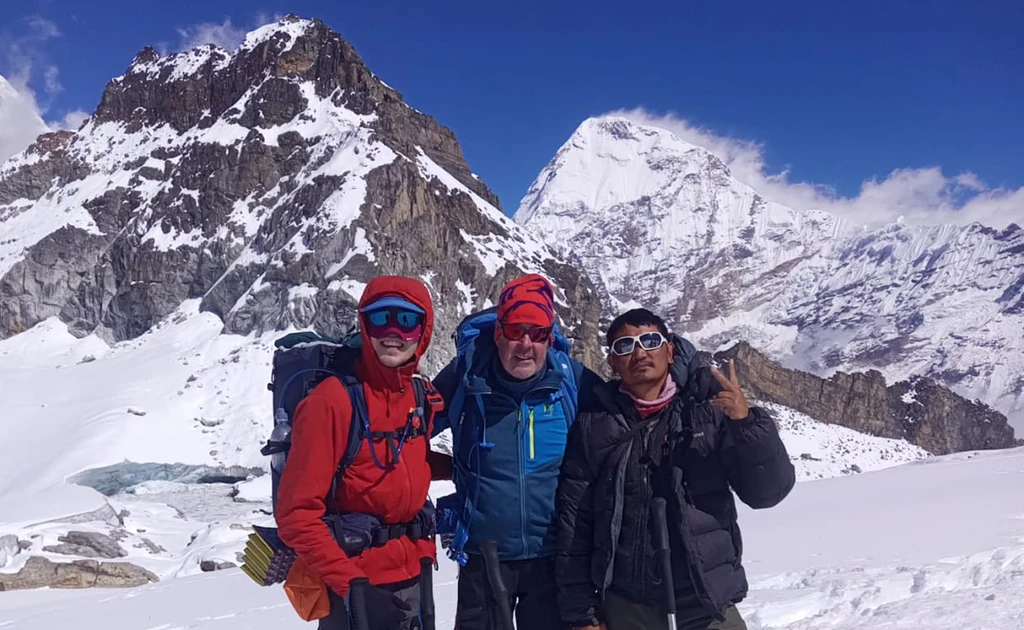Rising beside the majestic Mount Everest, Mera Peak (6,461 m) stands as the highest trekking peak in Nepal, offering both adventure and breathtaking Himalayan beauty. Known for its non-technical ascent, Mera Peak is ideal for experienced trekkers and beginner climbers who dream of standing atop a Himalayan summit without requiring advanced mountaineering skills. This short expedition takes you deep into the Hinku Valley, blending thrilling high-altitude trekking with rich Sherpa culture and awe-inspiring mountain scenery. From the summit, the views of Everest, Lhotse, Makalu, Kanchenjunga, and Cho Oyu are simply unforgettable — a reward that makes every step worth it.
For many, Mera Peak serves as an excellent preparation climb for higher expeditions above 8,000 meters. It’s a cost-effective way to gain valuable mountaineering experience while enjoying the peace and isolation of the Khumbu region.
Mera Peak Climbing Difficulty Level
Standing atop Mera Peak (6,461m) is a feeling like no other — the world below fades, and you’re surrounded by the towering giants of the Himalayas. The climb is demanding, with snowfields, glaciers, and steep ascents testing your physical endurance and mental strength. Navigating the final snow dome with a Jumar on fixed ropes is both thrilling and rewarding, and mastering tools like ice axes and crampons adds to the sense of achievement.
Every step challenges you, from unpredictable weather to the thin mountain air, but the view from the summit — an endless panorama of Everest, Lhotse, Makalu, and more — makes it all worth it. With proper acclimatization, expert guidance, and the right gear, Mera Peak becomes more than a climb — it’s a life-changing adventure that stays in your heart forever.
Best Time
The best time to climb Mera Peak is during April, May, October, and November. In April and May, the weather is stable, temperatures are moderate, and the rhododendron forests along the trail bloom in vibrant colors, creating a breathtaking setting for your trek. In October and November, after the monsoon, the air is crisp and clear, providing excellent visibility for summit attempts and stunning views of the Himalayas, including Everest, Lhotse, and Makalu. These months offer the safest, most comfortable, and visually rewarding conditions for a memorable Mera Peak climbing experience.
